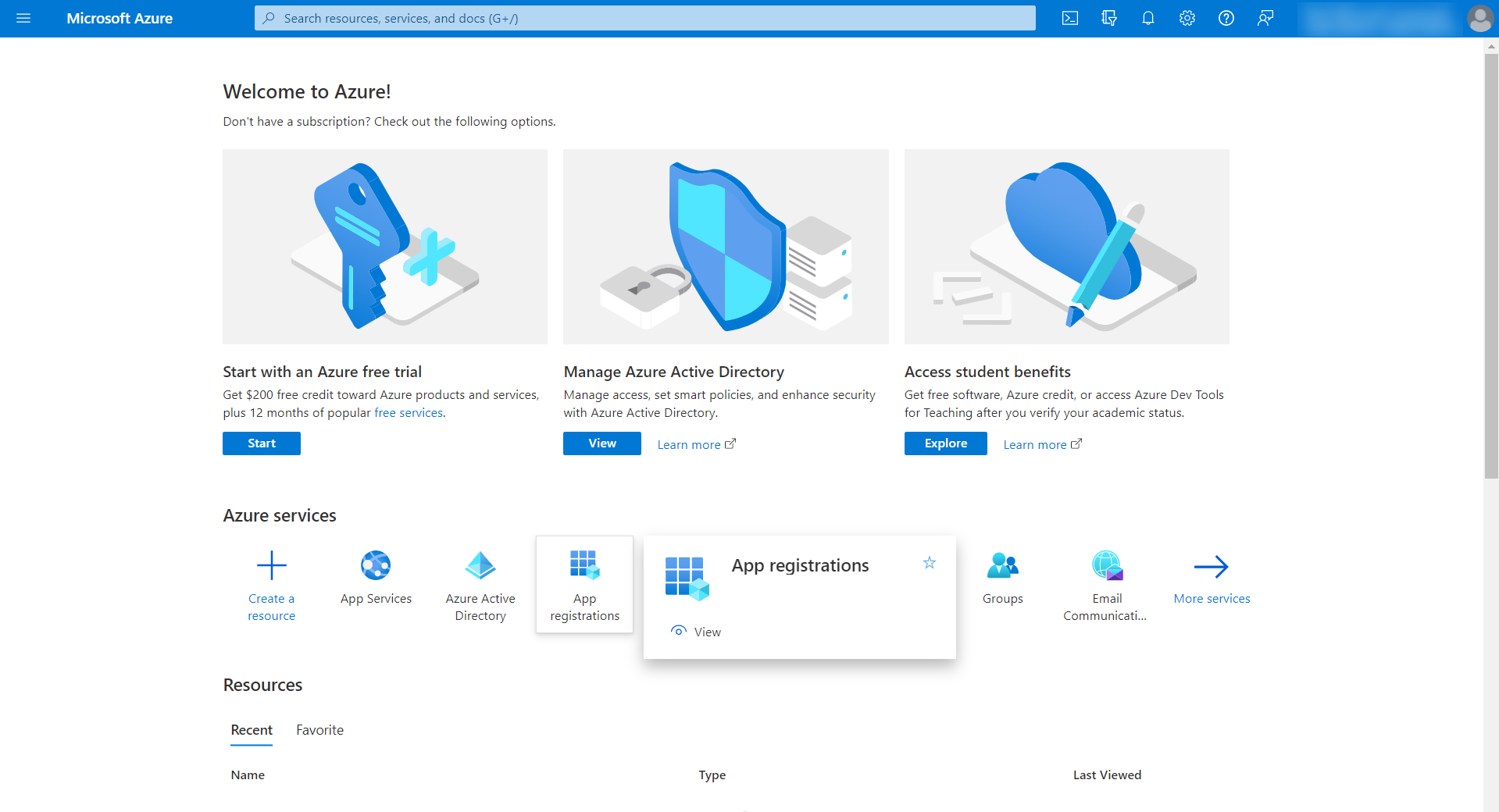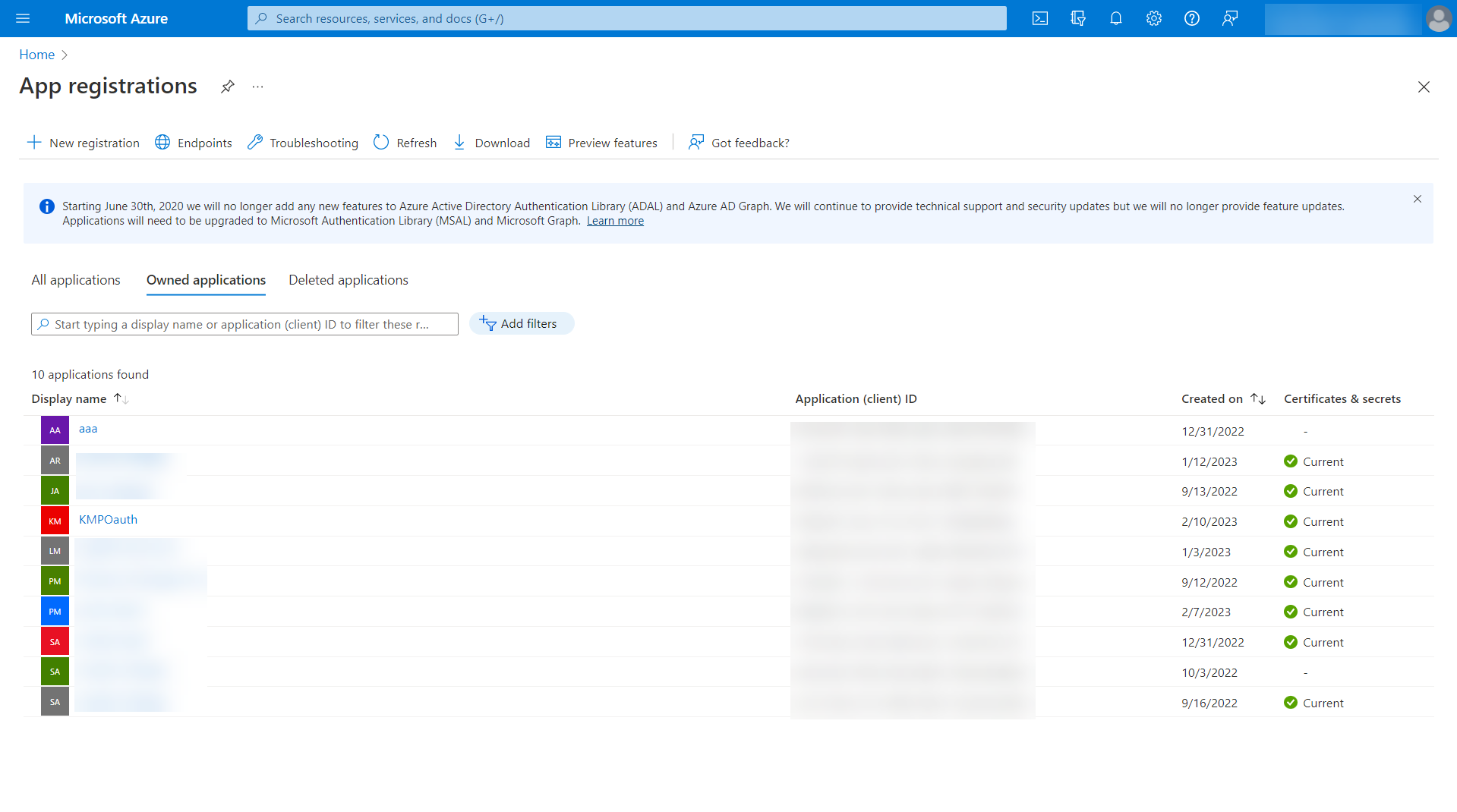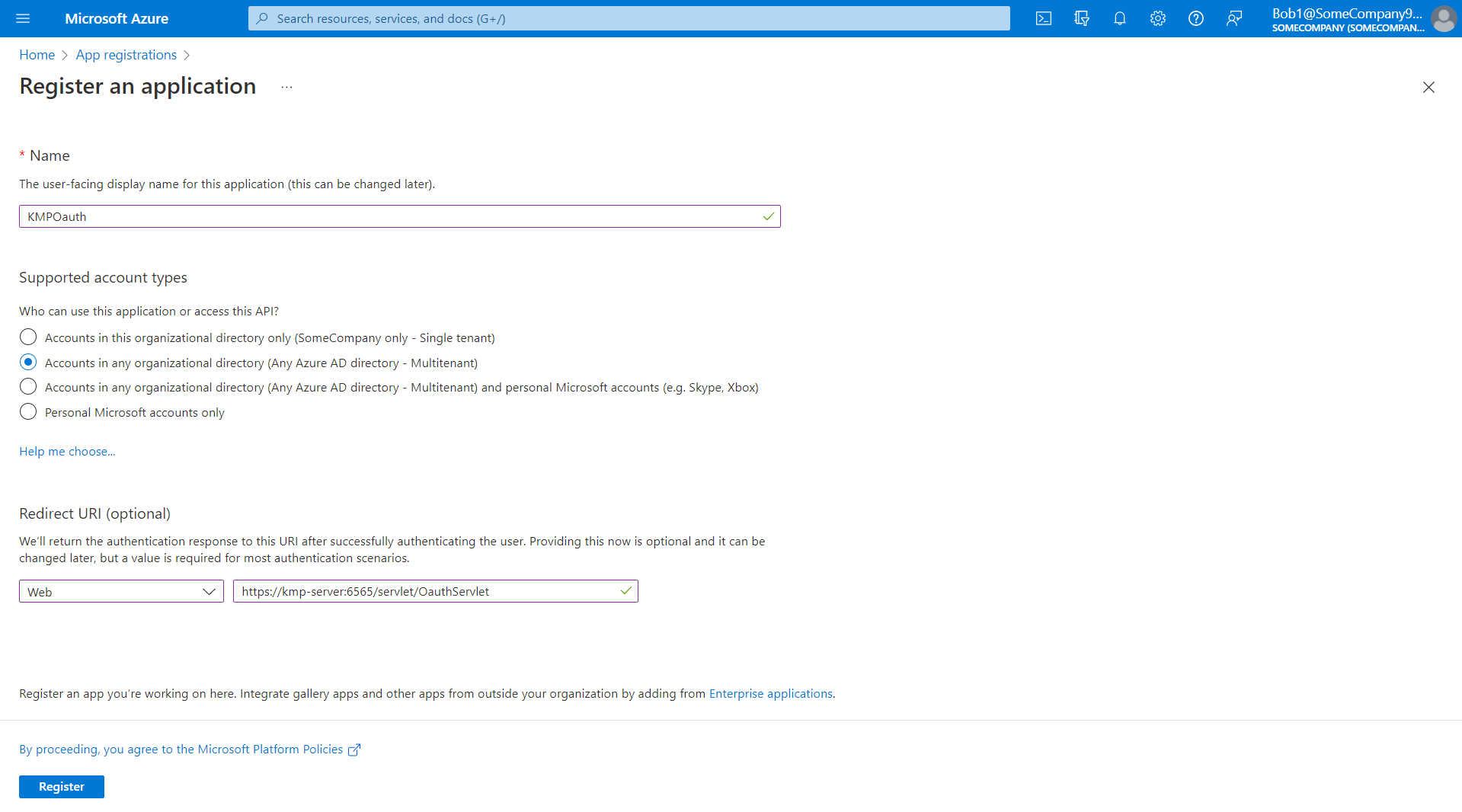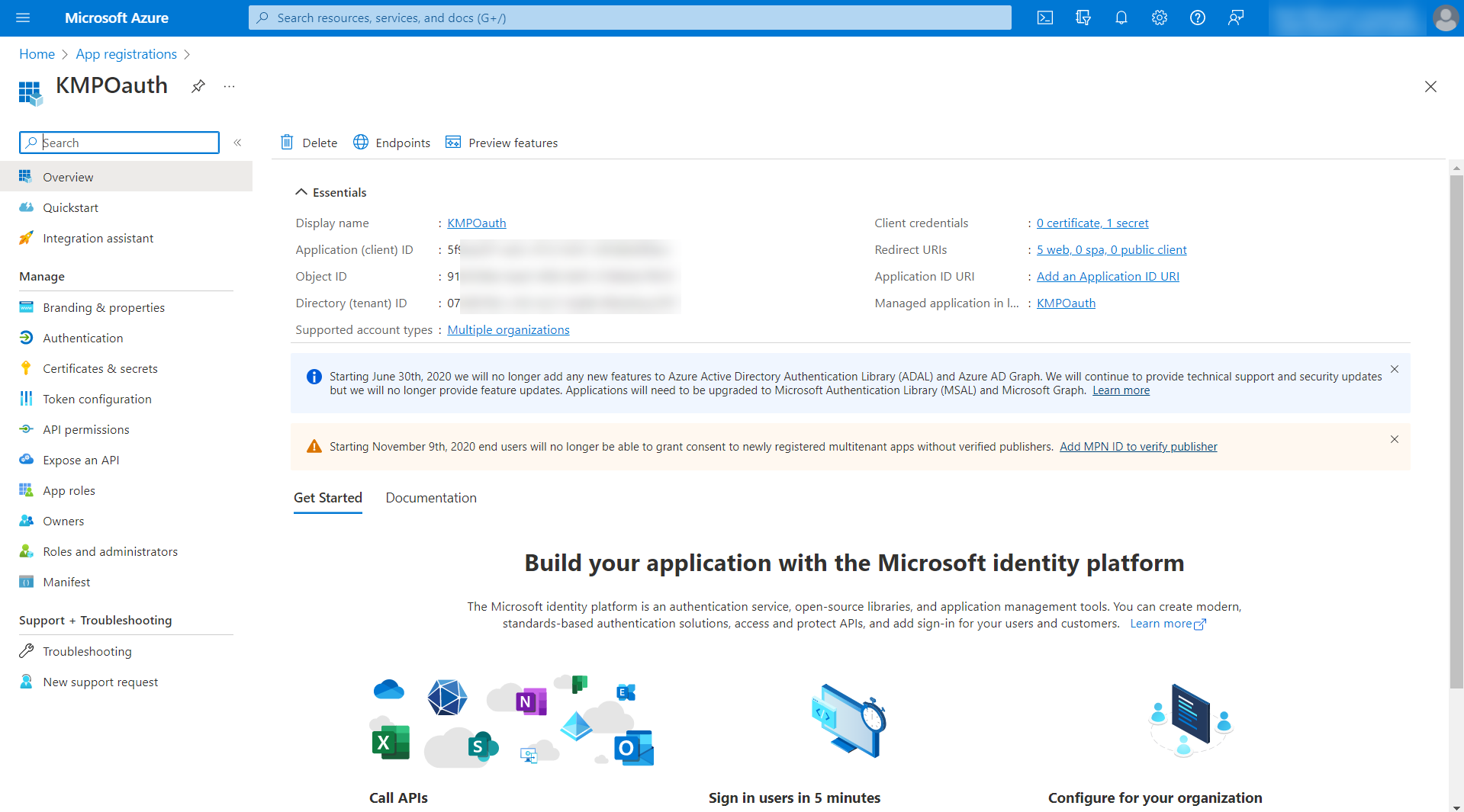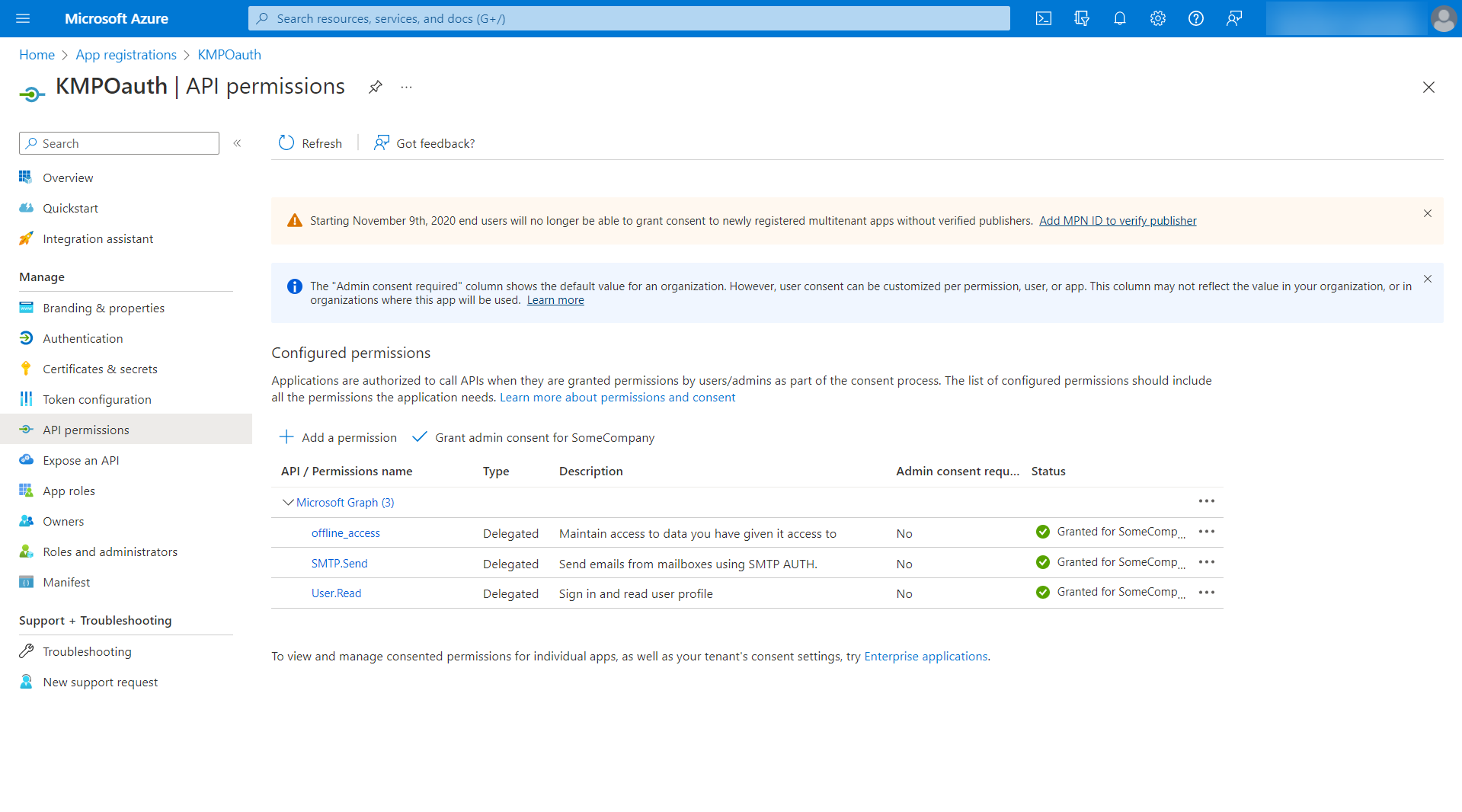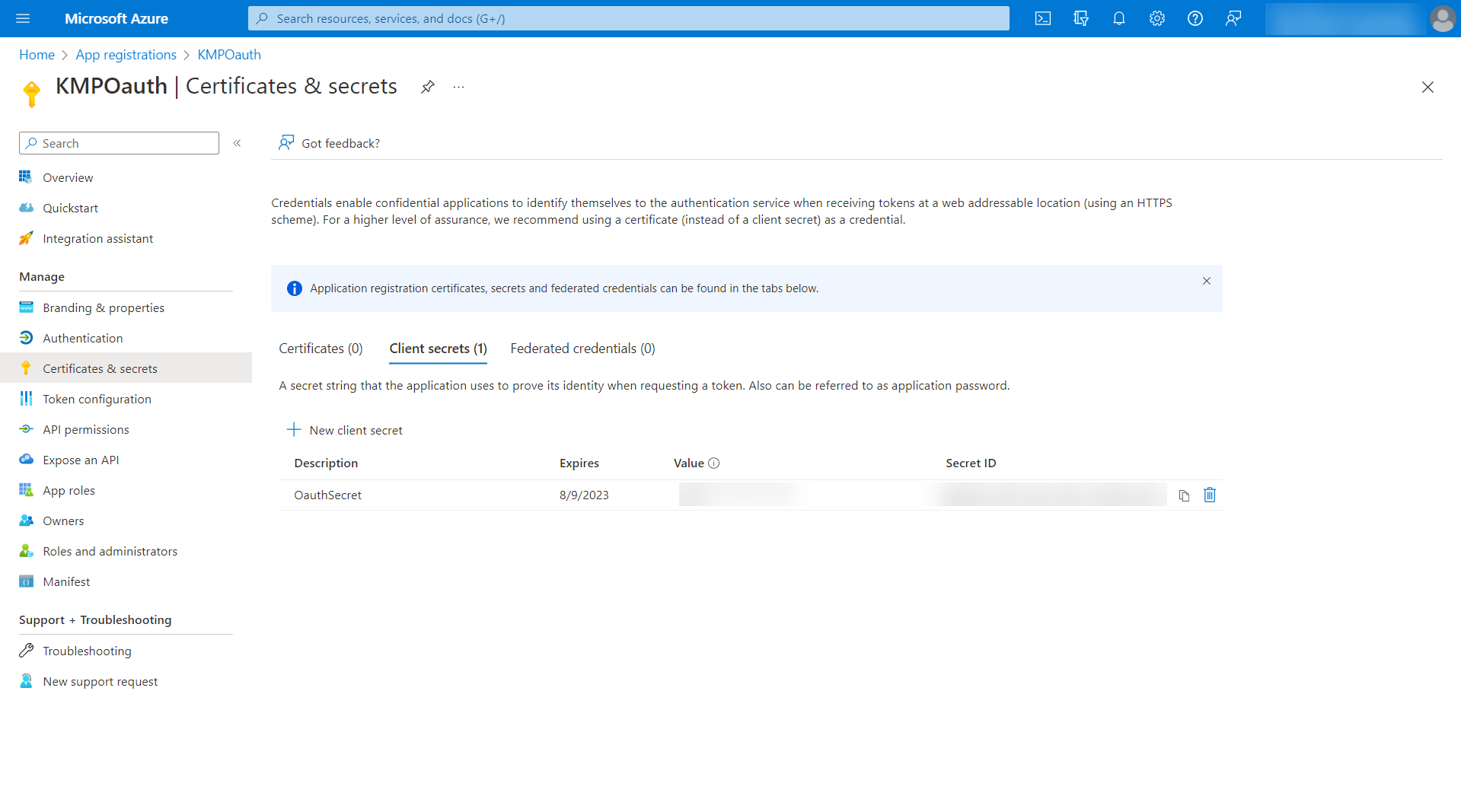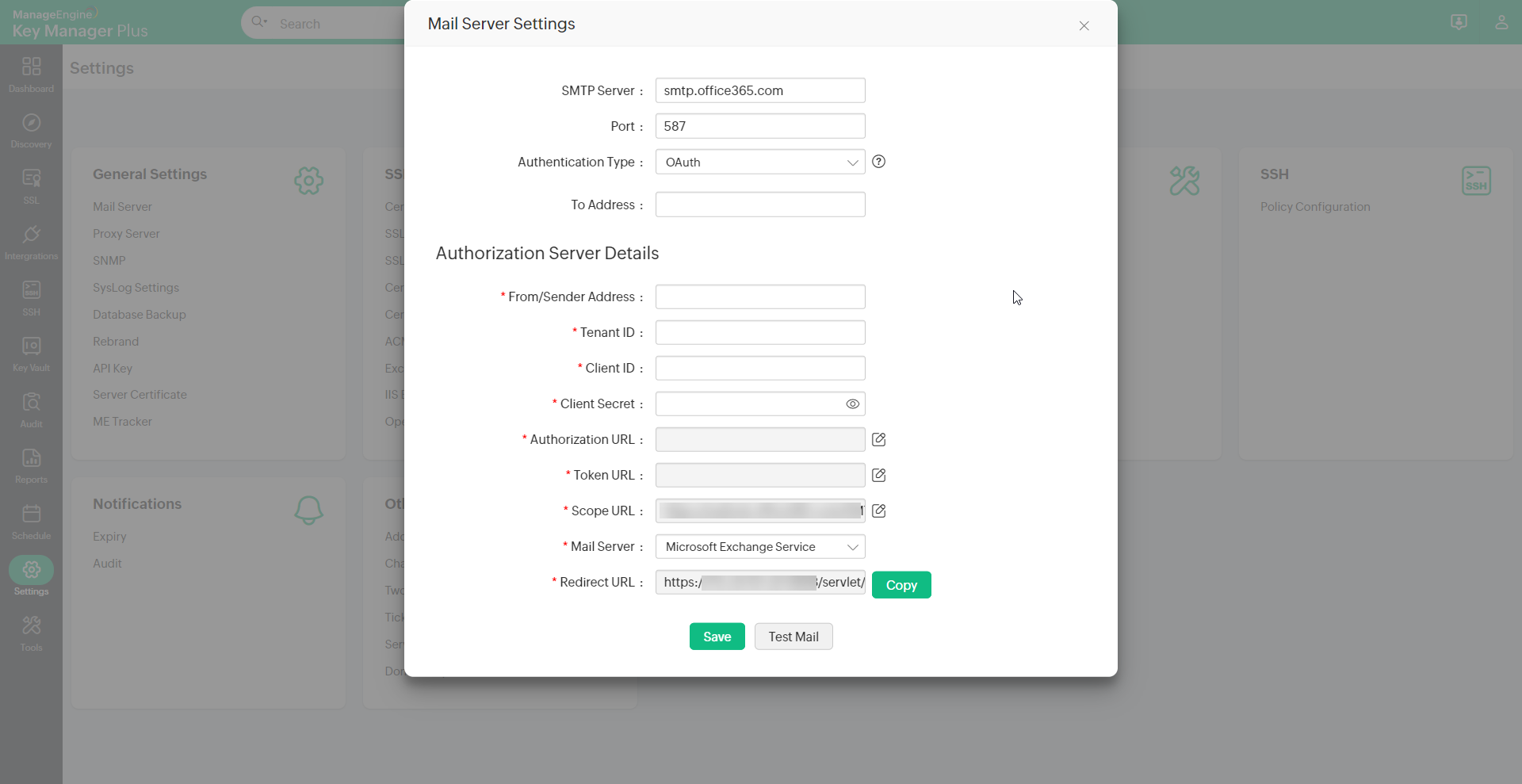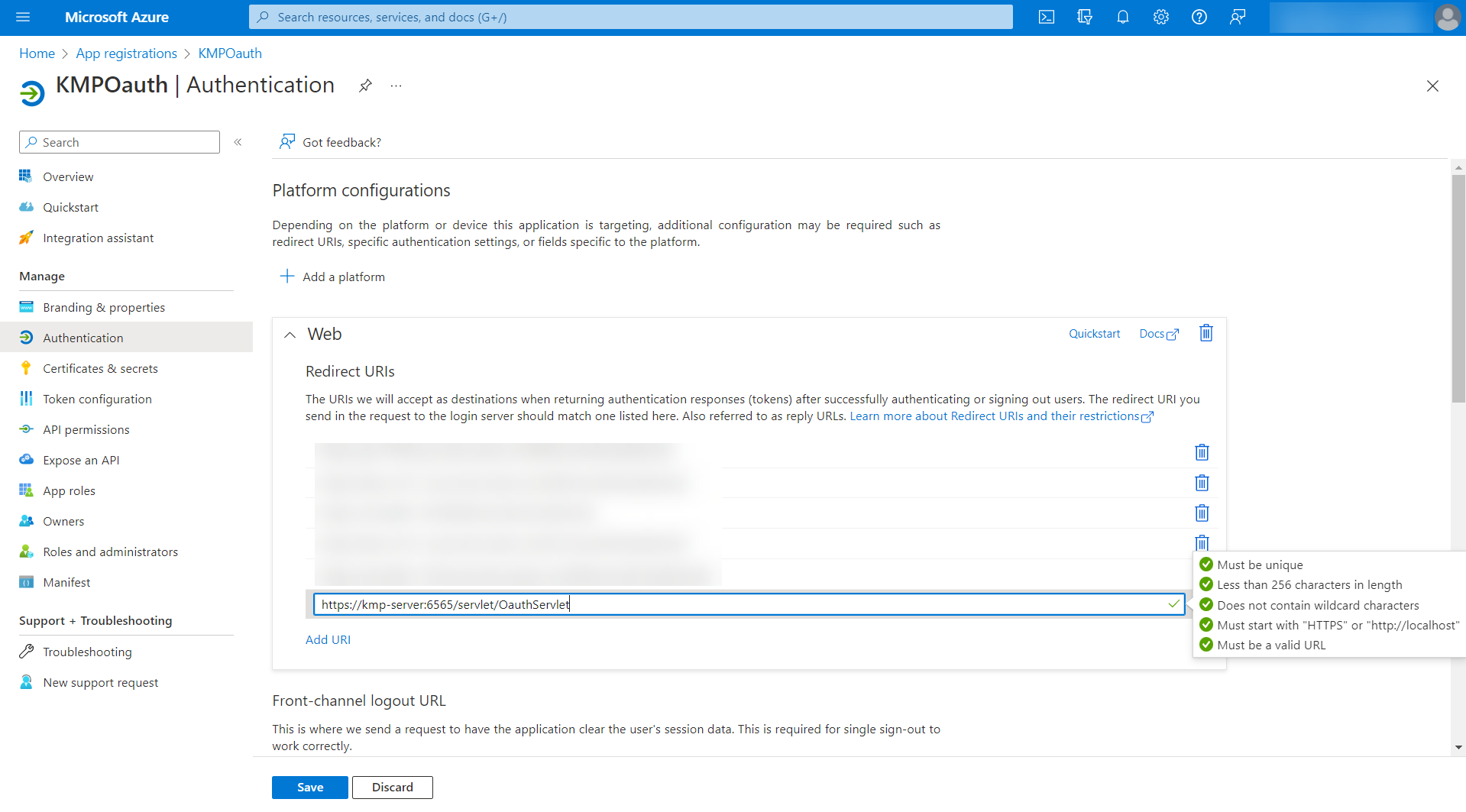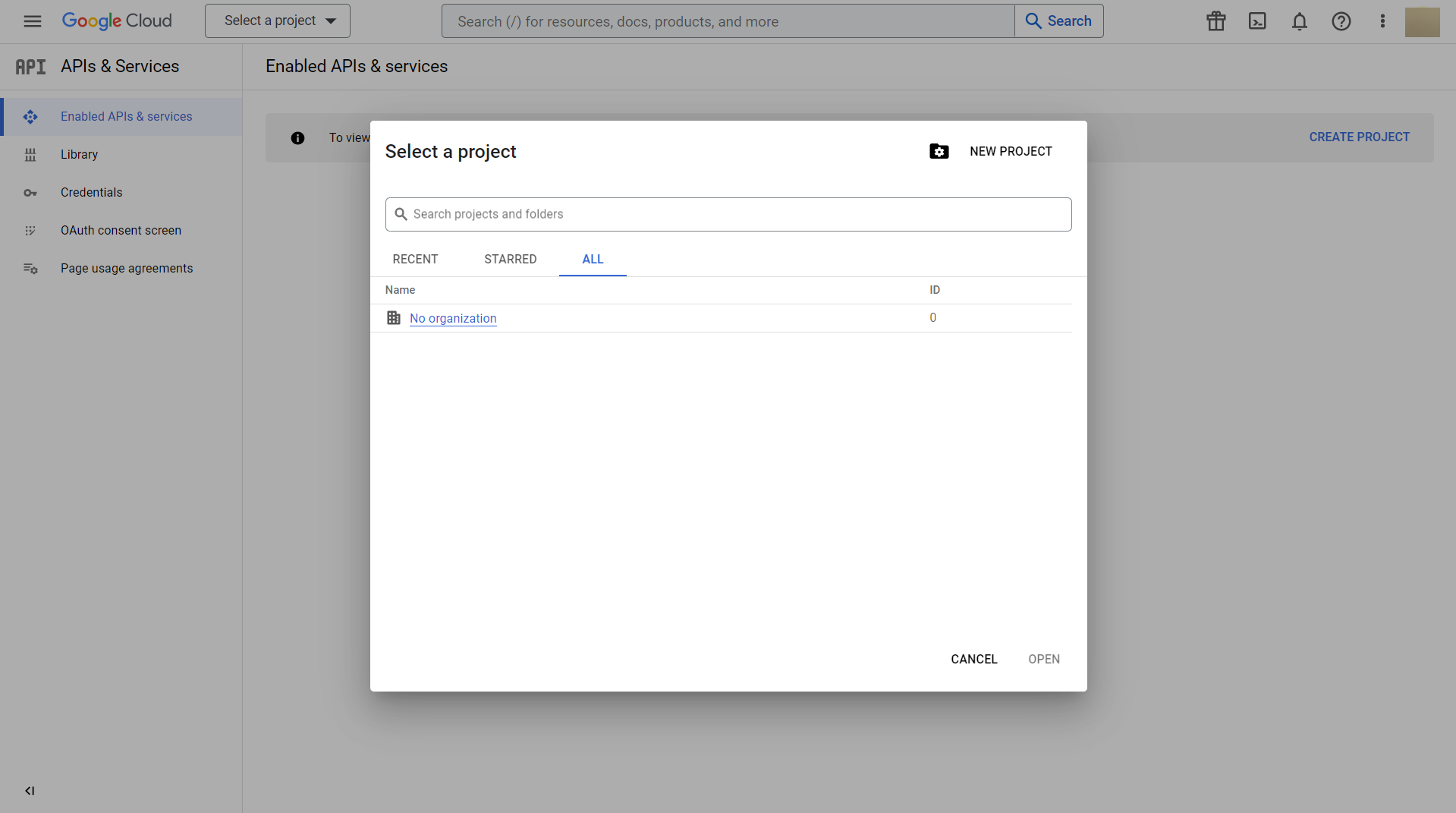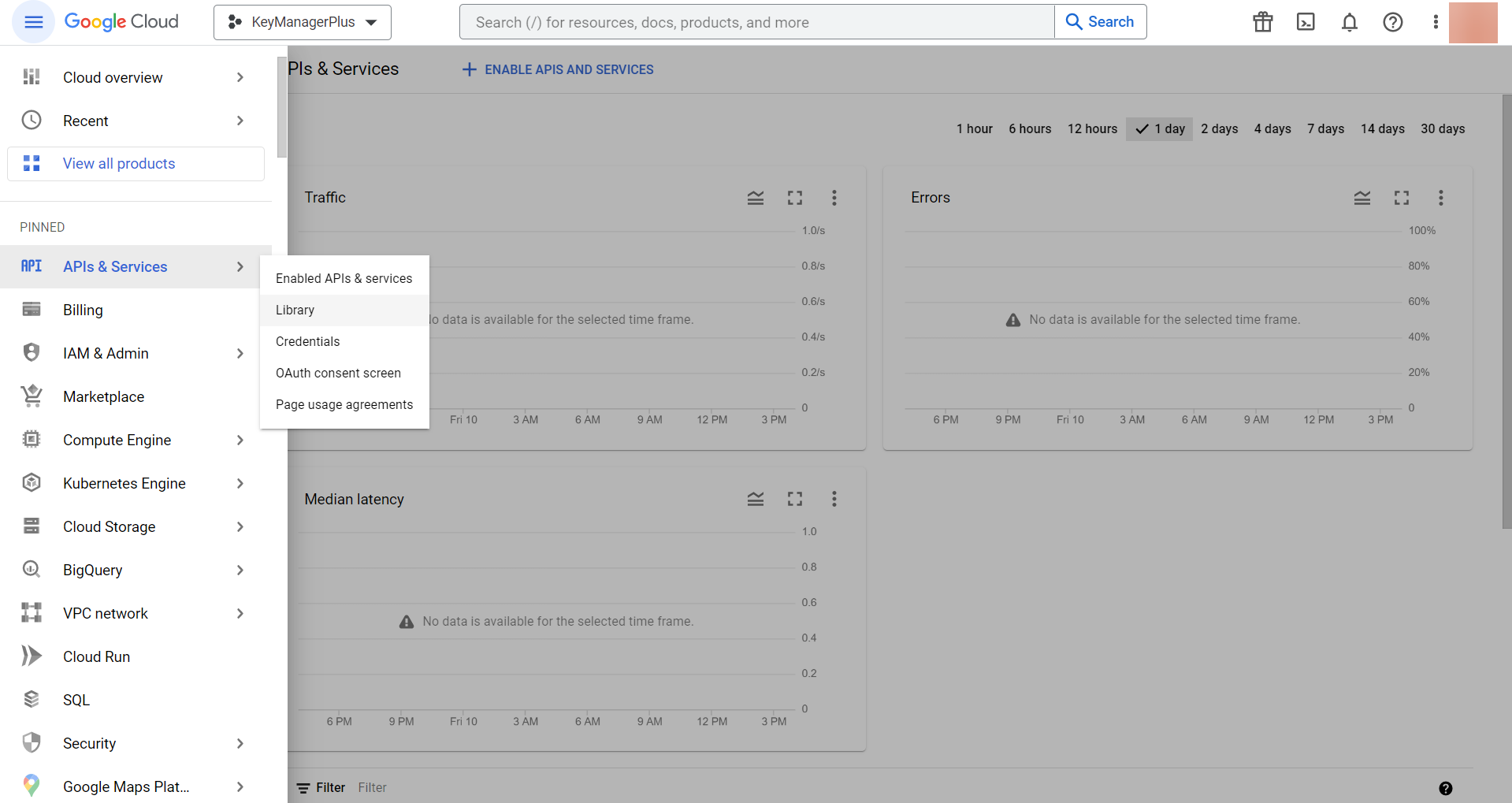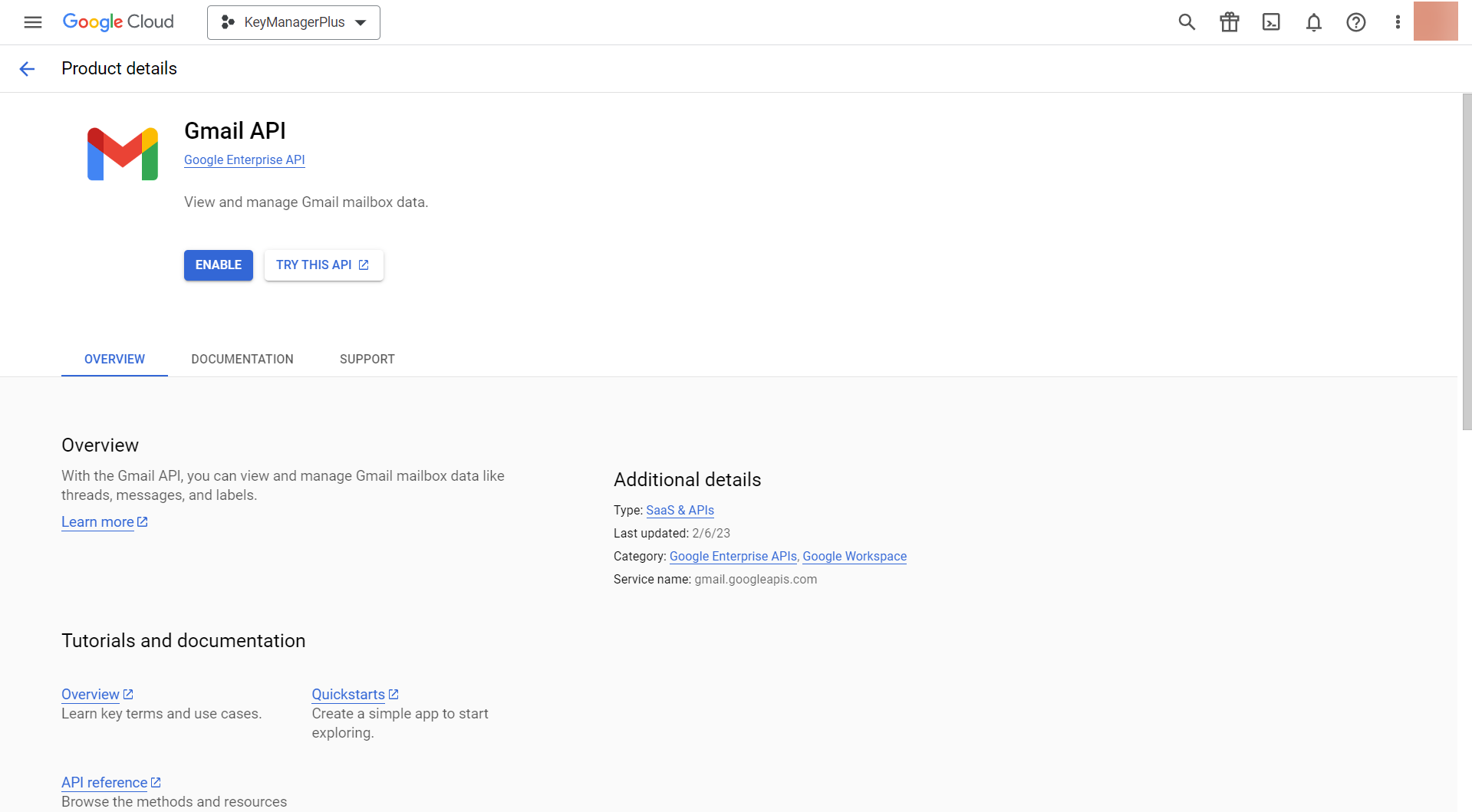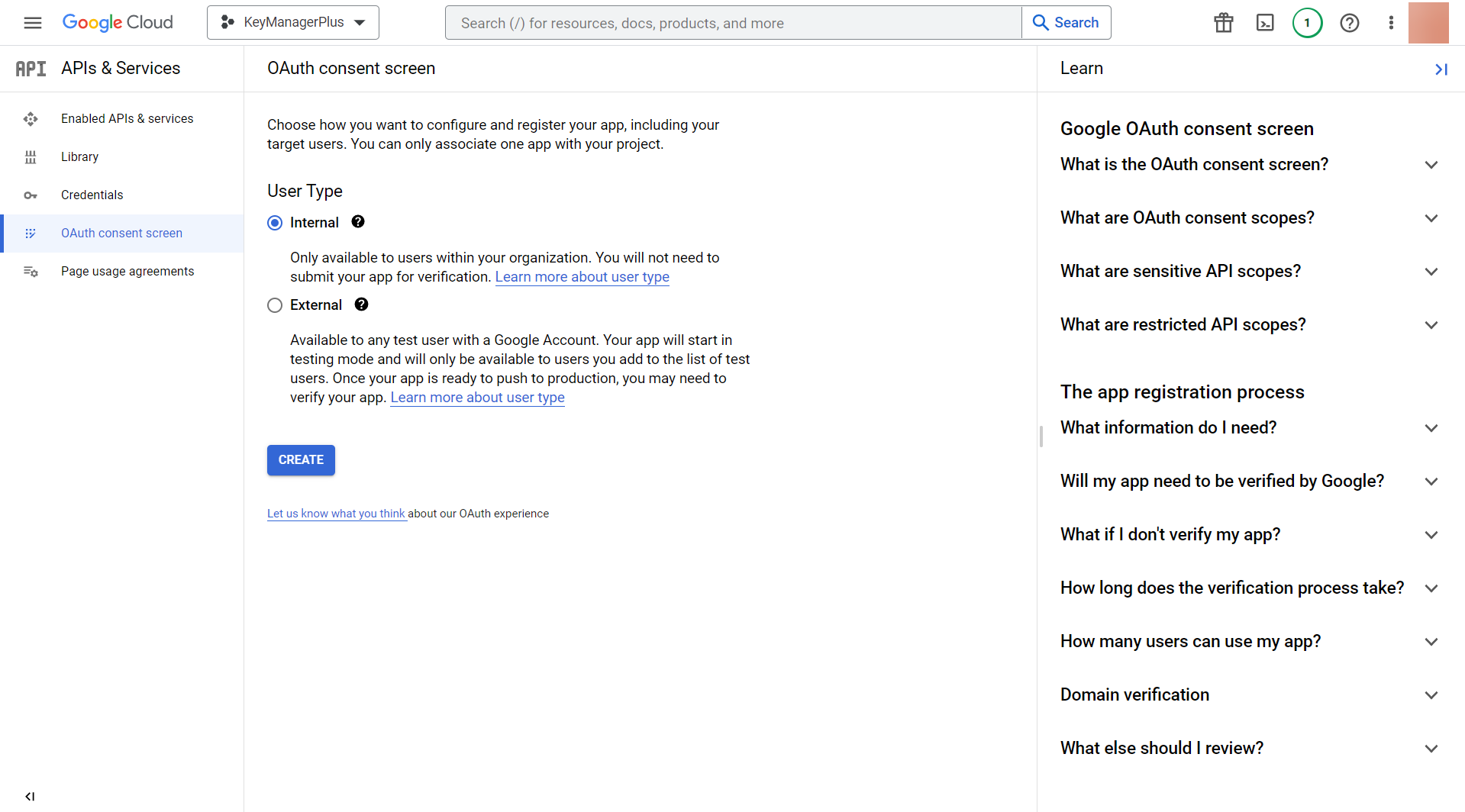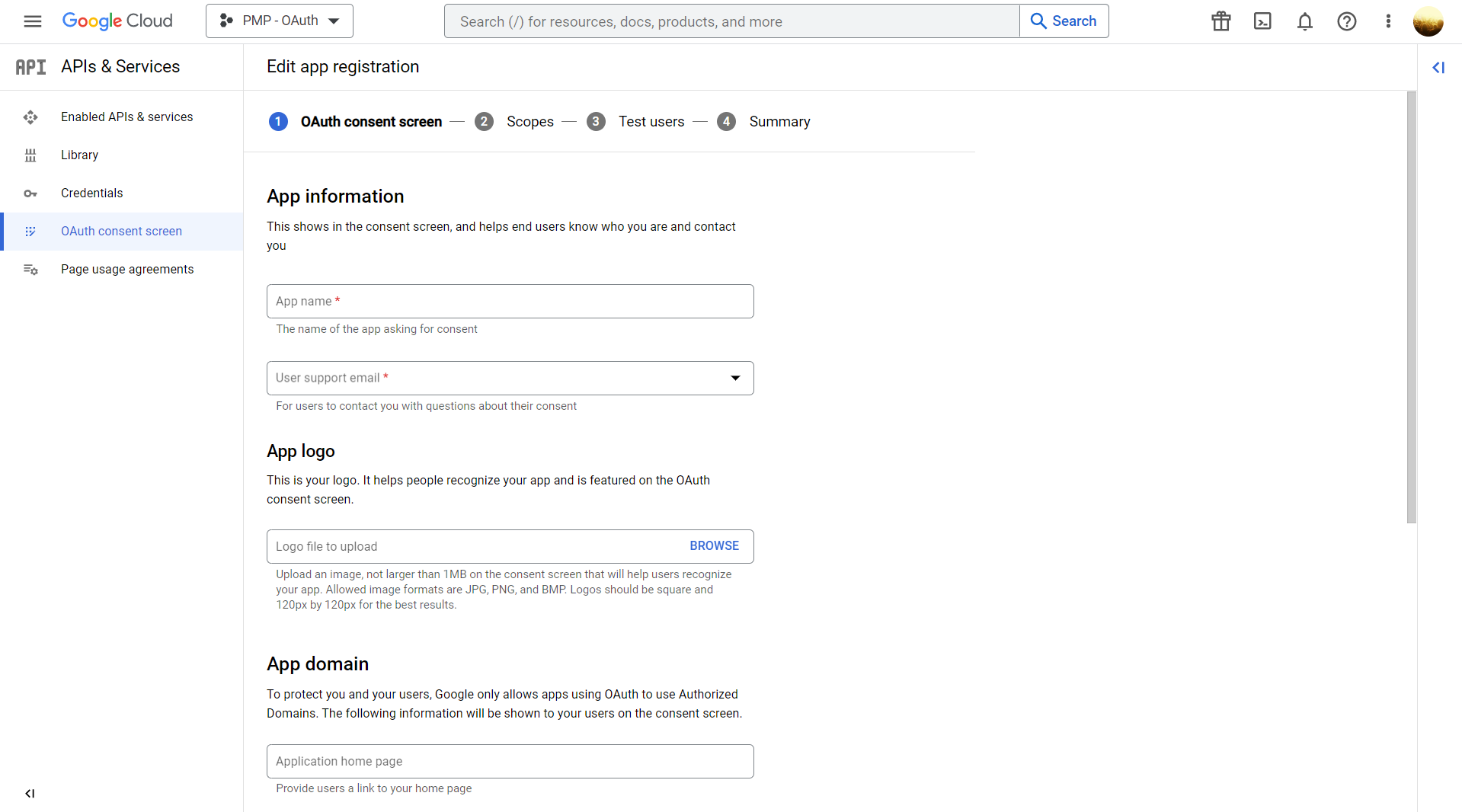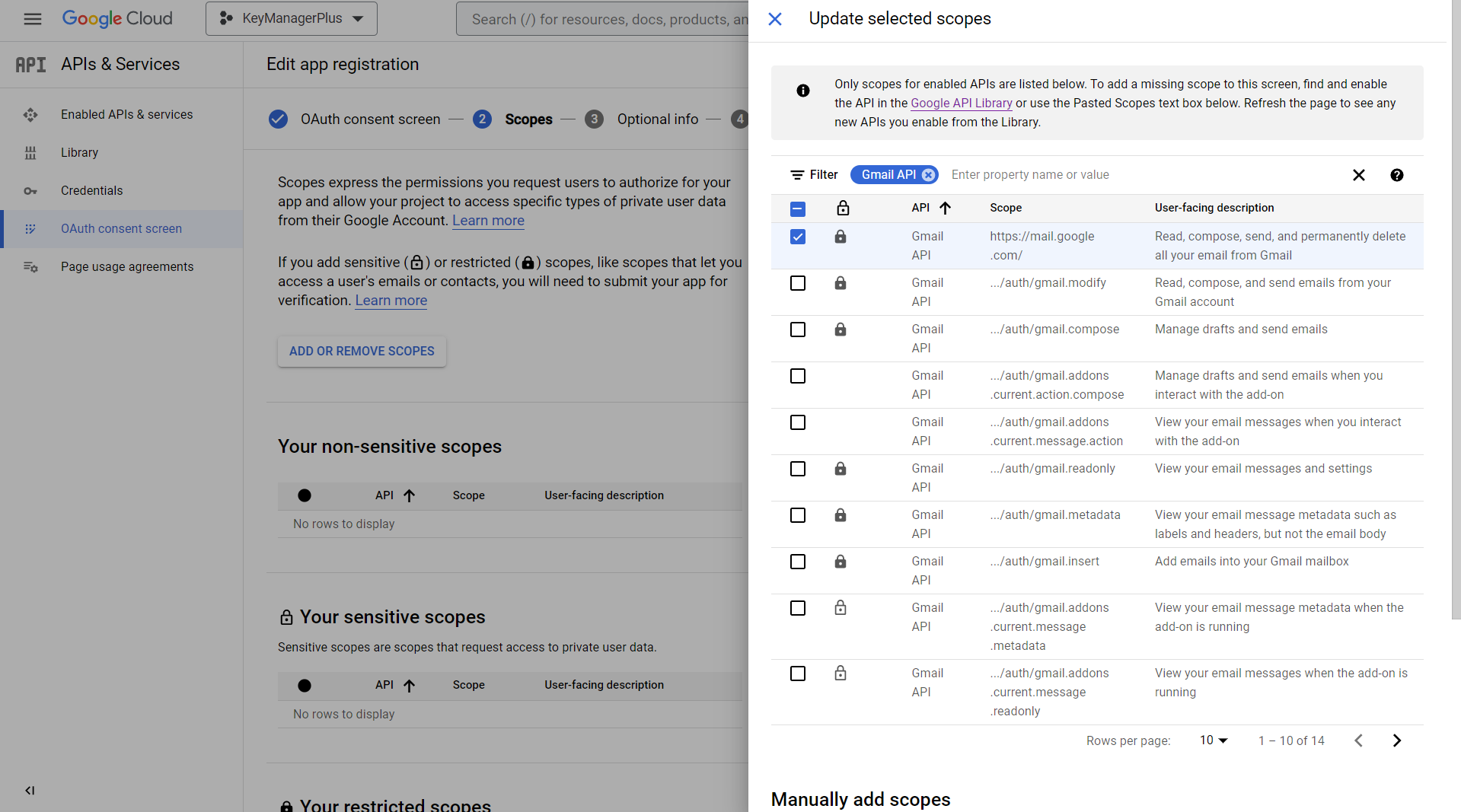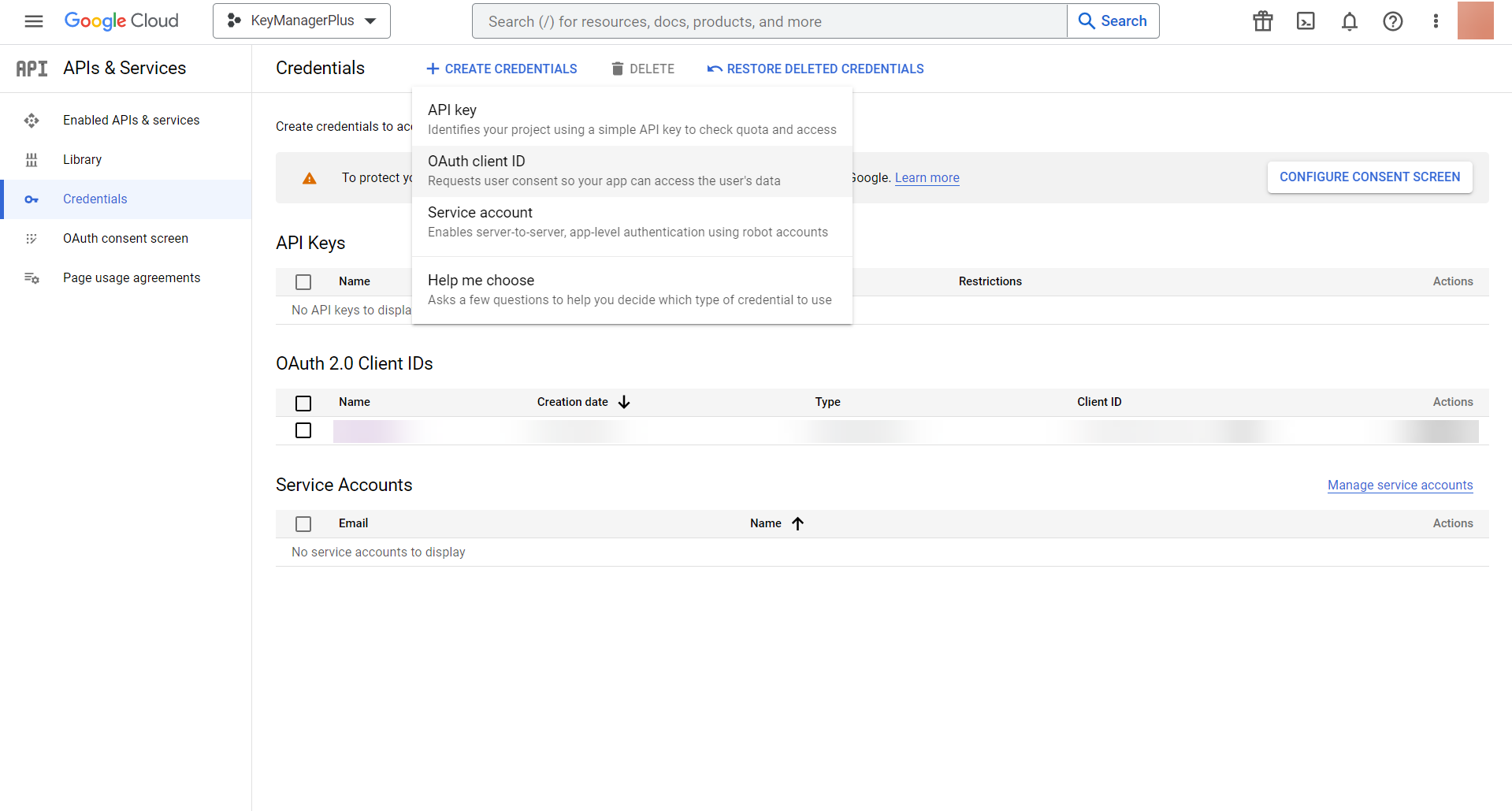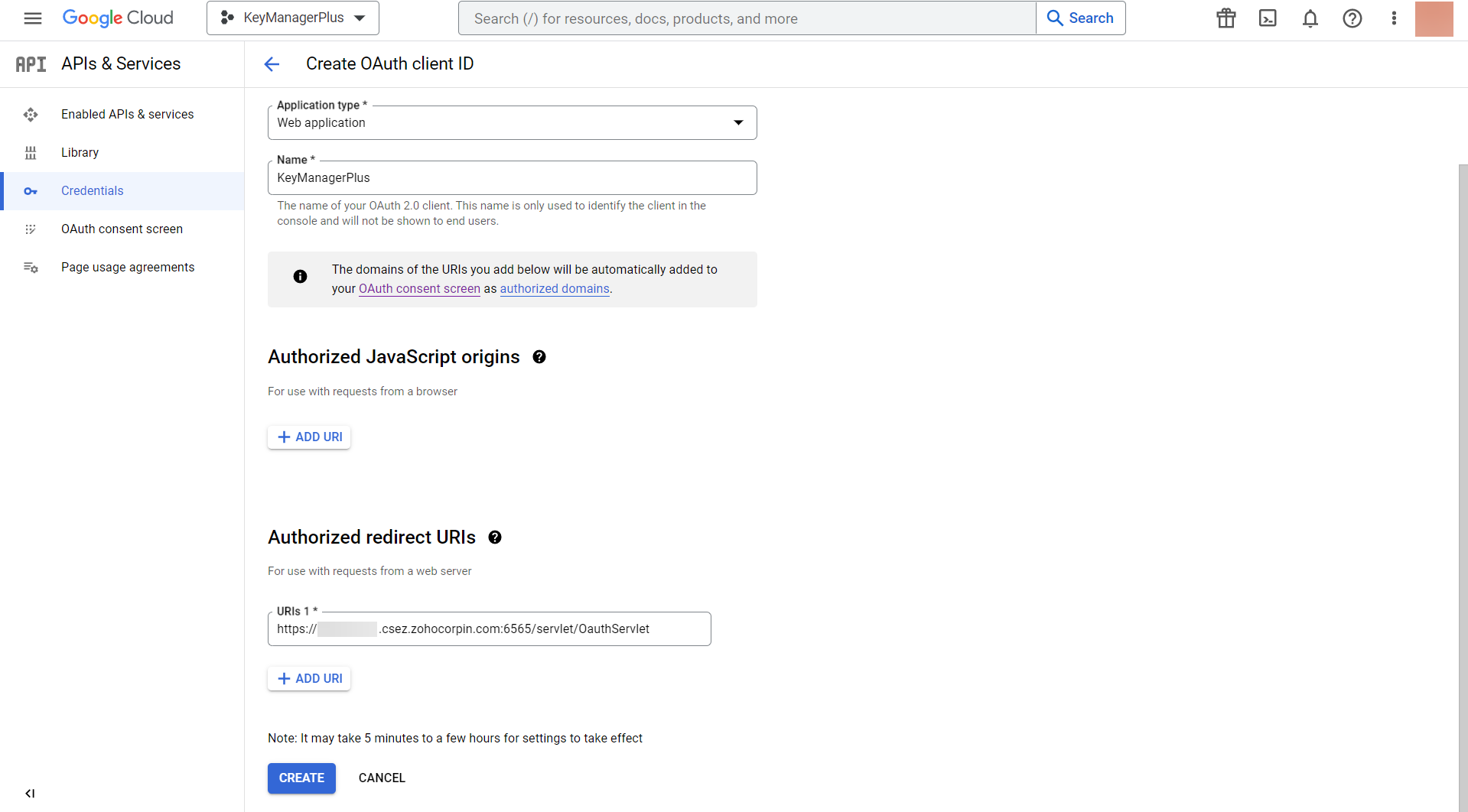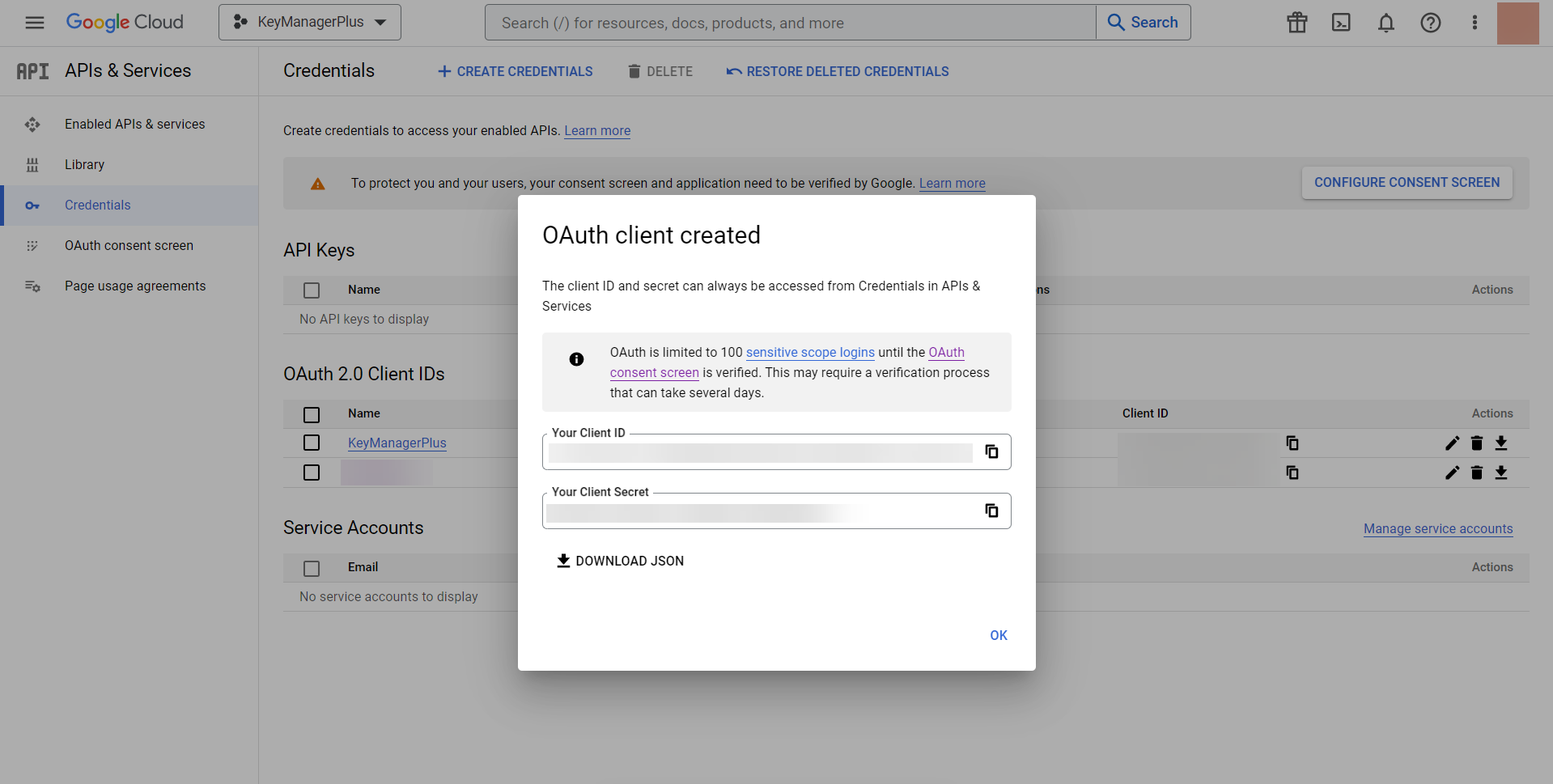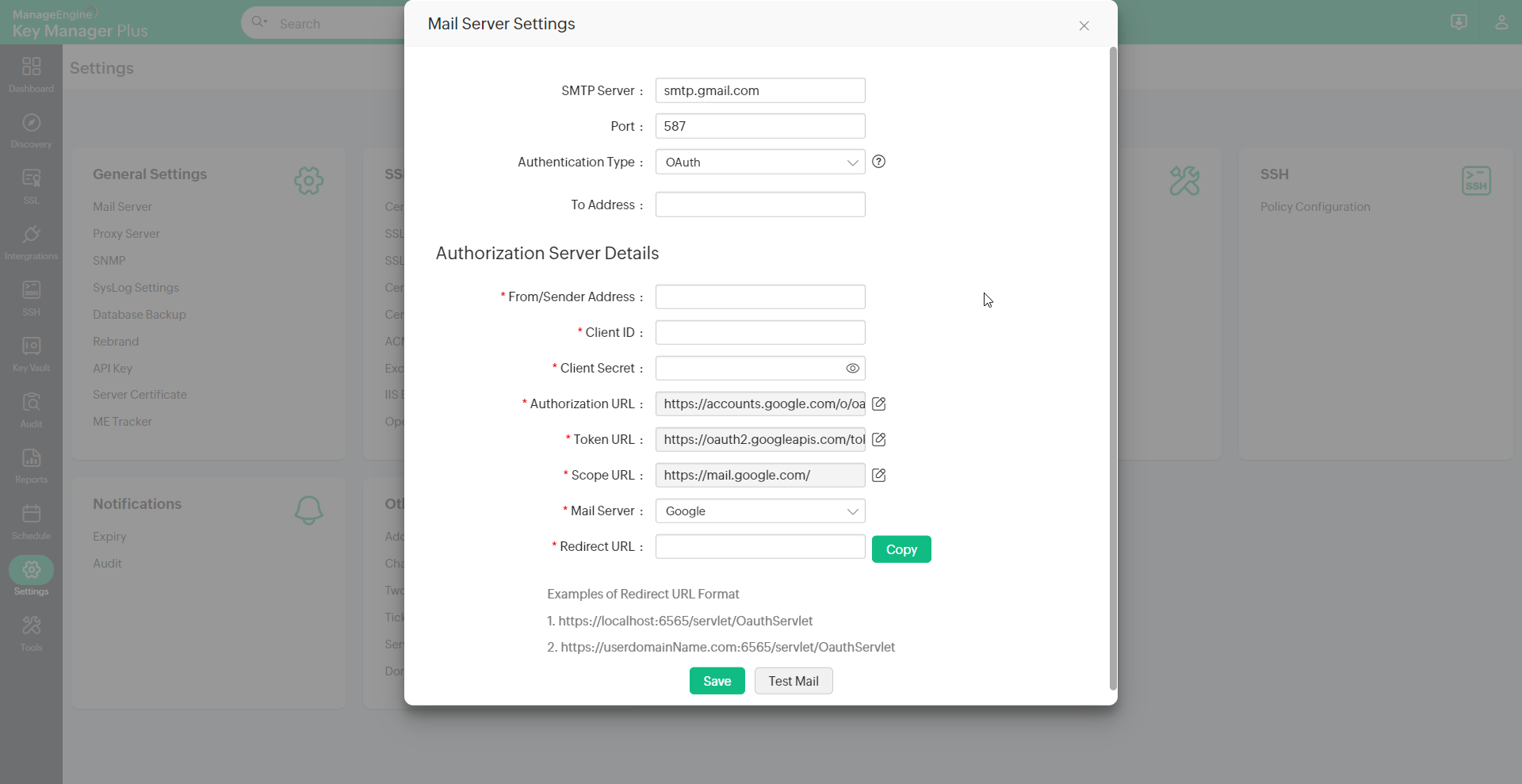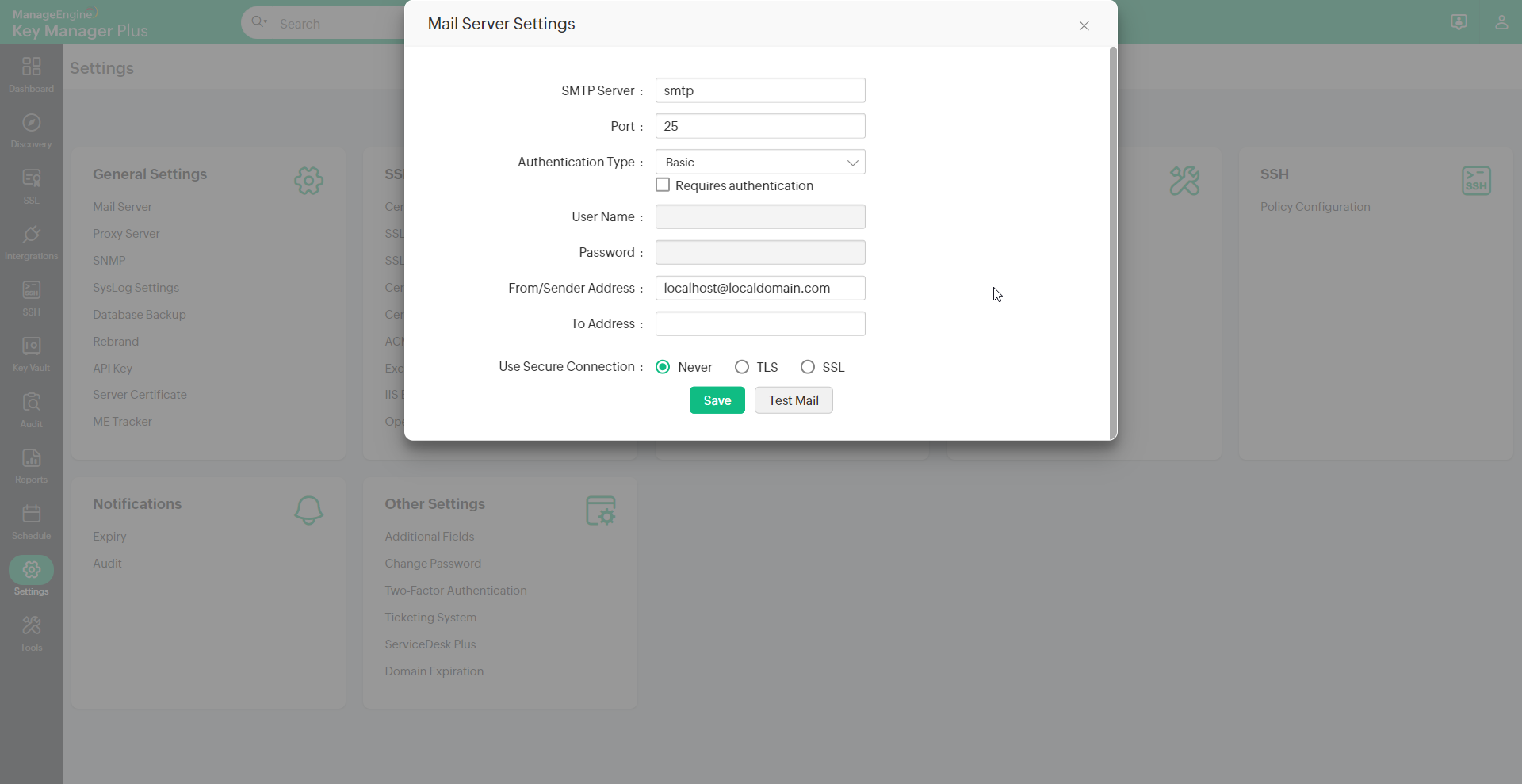Mail Server Settings13 minutes to read
Prior to configuring Key Manager Plus in an organization, you must configure some prerequisites that allow Key Manager Plus to send emails directly from within the application without requiring an external email client. Key Manager Plus sends email notifications to newly added users to notify details that include - their login credentials, configured schedules, policy enforcement, and reports. You can either configure the SMTP mail server used in your environment, or an external mail server, such as Microsoft Exchange Service or Google, which allow OAuth authentication to be enabled for all emails sent from Key Manager Plus. Scroll down to learn about configuring different mail server settings in Key Manager Plus.
1. Configuring Microsoft Exchange Service as the Mail ServerTo configure Microsoft Exchange Service as the mail server in Key Manager Plus, you must create an Azure application in the Microsoft Azure portal to generate certain inputs for the OAuth authentication. Follow the below section for further configuration details: 1.1 Creating an Azure Application for Microsoft Exchange Service as the Mail Server
1.2 Configuring Microsoft Exchange Service as the Mail Server in Key Manager Plus
2. Configuring Google as the Mail ServerTo configure Google as the mail server in Key Manager Plus, you must create a project in the Google cloud and generate the respective Client ID and Client Secret value. Follow the below sections for further configuration details: 2.1 Creating a Google Application for Google as the Mail Server
Google is now configured as your organization's authorization server. 2.2 Configuring Google as the Mail Server in Key Manager Plus
3. Configuring Other Mail Servers
You have now configured your organization SMTP mail server in as the mail server for Key Manager Plus. Notes:
©2025, Zoho Corporation Pvt. Ltd. All Rights Reserved. |
|
